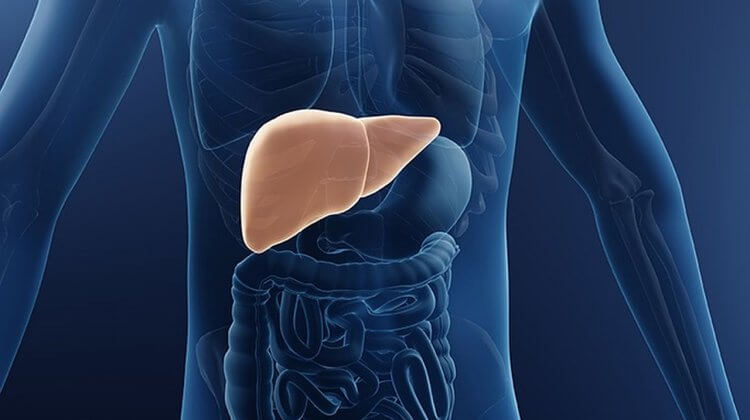
Anabolic steroid-induced hepatotoxicity: is it overstated?
Researchers: Dickerman RD, Pertusi RM, Zachariah NY, Dufour DR, McConathy WJ
The Department of Biomedical Science, University of North Texas Health Science Center, Fort Worth 76107-2699, USA.
Source: Clin J Sport Med 1999 Jan;9(1):34-9
Summary:
Subjects: The participants were bodybuilders taking self-directed regimens of anabolic steroids (n = 15) and bodybuilders not taking steroids (n = 10). Blood chemistry profiles from patients with viral hepatitis (n = 49) and exercising and non-exercising medical students (592) were used as controls.
Measurements: The focus of the blood chemistry profiles was on aspartate aminotransferase (AST), alanine aminotransferase (ALT), gamma-glutamyltranspeptidase (GGT), and creatine kinase (CK) levels. (All indicators of liver function.)
Results: In both groups of bodybuilders, CK, AST, and ALT were elevated, whereas GGT remained in the normal range. In contrast, patients with hepatitis had elevations of all three enzymes: ALT, AST, and GGT. Creatine kinase (CK) was elevated in all exercising groups. Patients with hepatitis were the only group in which a correlation was found between aminotransferases and GGT.
Discussion:
All in all this study was pretty straight forward. It set out to see if markers other than aminotransferase (AST) of liver function were correlated with steroid use in bodybuilders. In this study we saw the comparison of blood samples from steroid using bodybuilders, non-steroid using bodybuilders, med students, and patients with hepatitis. Several indicators of liver function were measured wich included aspartate aminotransferase (AST), alanine aminotransferase (ALT), gamma-glutamyltranspeptidase (GGT), and creatine kinase (CK) levels. Creatine kinase is a common blood marker of muscle damage and thus it was elevated in those subjects who exercised. The other markers have normal values as well in healthy subjects (see table 1). I include a table of normal ranges for these markers simply to give you some idea of what your particular blood test results mean if you should have them done while on a cycle. And yes, if you are lucky enough to have a doctor who is willing to monitor your health knowing you are using anabolics please have your blood work done before, during, and after your cycles.
Table 1.
|
Test |
Reference Range (Conventional) |
Reference Range (International) |
|
Aspartate aminotransferase |
NA |
10-30 U/L |
|
Alanine aminotransferase |
NA |
8-20 U/L |
|
Gamma-glutamyltranspeptidase |
NA |
Male: 9-50 U/L Female: 8-40 U/L |
|
Creatine kinase |
Fraction 2 (MB)<4-6% of total |
Male: 38-174 U/L Female: 26-140 U/L Fraction of total: 0.04-0.06 |
Please don’t misinterpret the reason for my inclusion of this study in Research Update. I am by no stretch of the imagination claiming that this study proves that 17-a-alkylated steroids are not hard on the liver. On the contrary, extremely high doses of 17-alkylated androgens taken for extended periods of time have been known to produce signs of hepatic adenomas, hepatocellular carcinomas, and hepatis-peliosis, all of which can be serious problems. The reason I felt this study warranted mention was that it showed that some researchers are working hard to delineate or clarify the true effects, and side effects, of anabolic steroid use in bodybuilders. In particular, R Dickerman and colleagues over at the Department of Biomedical Science, University of North Texas Health Science Center have recently done several studies investigating the effects of anabolic steroids on various aspects of physiology.
To summarize, the usual tests that have been relied on to declare hepatotoxicity from steroid use may be and are very likely to be, inadequate to justify such a claim when considering the type of subjects in this study. The lack of abnormality in gamma-glutamyltranspeptidase from bodybuilders using anabolics indicates that the elevated levels of the other markers may be misleading when it comes to true liver function and may be partly related to muscle damaged induced by resistance exercise. The authors of this study put it this way:
“Prior reports of anabolic steroid-induced hepatotoxicity based on elevated aminotransferase levels may have been overstated, because no exercising subjects, including steroid users, demonstrated hepatic dysfunction based on GGT levels. Such reports may have misled the medical community to emphasize steroid-induced hepatotoxicity when interpreting elevated aminotransferase levels and disregard muscle damage. For these reasons, when evaluating hepatic function in cases of anabolic steroid therapy or abuse, CK and GGT levels should be considered in addition to ALT and AST levels as essential elements of the assessment.”
This is not a statement giving the green light to bodybuilders who are or who intend to use androgens. It is simply a logical and interesting conclusion based on this study’s results. As usual, always educate yourself as to the risks involved with androgen use and take the necessary steps and precautions to minimize those risks if you plan on using them.
Leave a Reply
You must be logged in to post a comment.